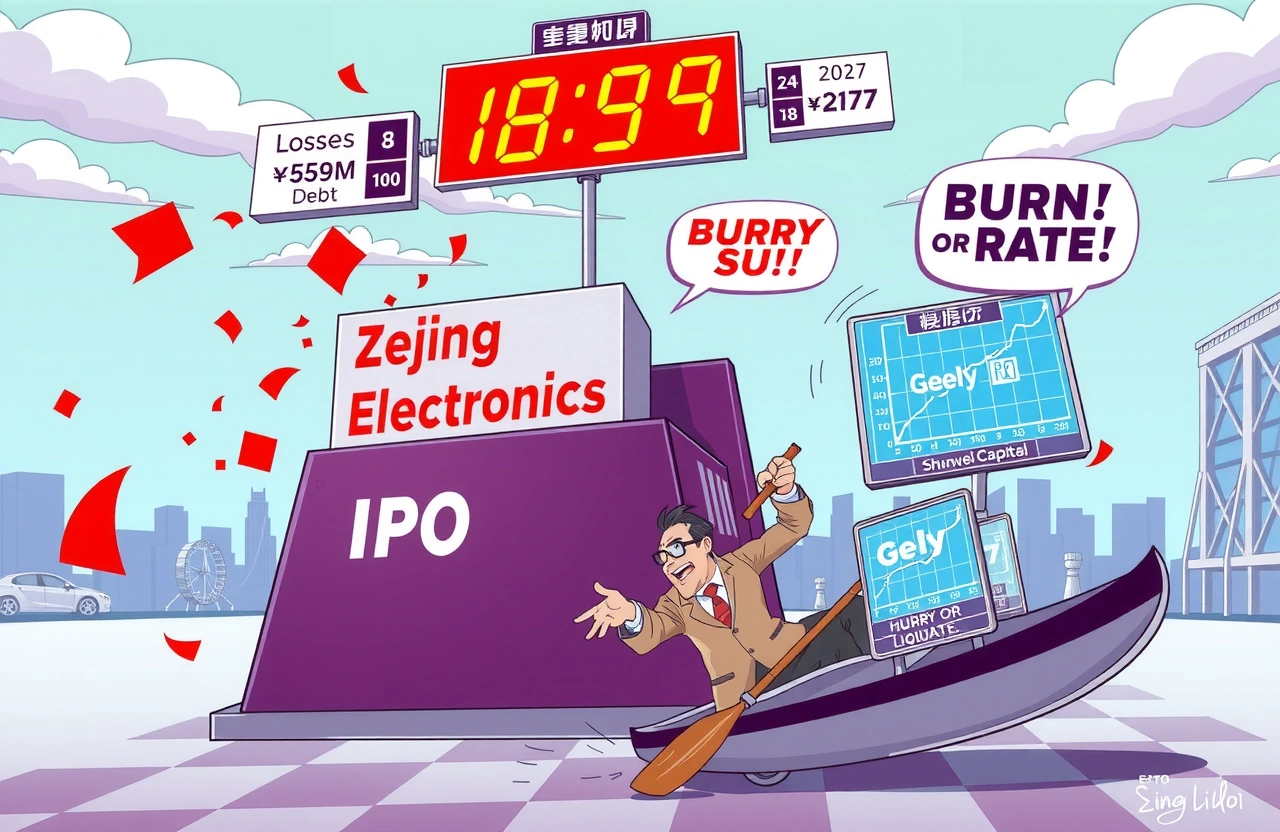The Unlikely Contender in China’s Auto Tech Race
As China’s automotive industry battles through cutthroat price wars and technological disruption, a relatively unknown player has emerged at the center of a high-stakes financial gamble. Zejing Electronics, China’s second-largest automotive heads-up display (HUD) supplier, recently filed for a Hong Kong IPO despite reporting over 569 million yuan ($78.4 million) in cumulative losses since 2022. What makes this story remarkable isn’t just the numbers—it’s the heavyweight backers betting against the odds. With investments from Xiaomi’s Shunwei Capital and Geely Holding Group, and validation from Lei Jun’s public endorsement during the Xiaomi SU7 launch, Zejing Electronics represents a fascinating case study of capital’s faith in automotive innovation.
Brothers in Arms: The Founders’ Journey
Grassroots Origins to Industry Disruptor
Founded in 2015 by brothers Zhang Bo (张波) and Zhang Tao (张涛), Zejing began as a classic underdog story. Zhang Bo, former Microsoft China engineer, spearheaded optical projection and AR algorithm development while Zhang Tao leveraged 18 years of experience at SAIC-Volkswagen to build commercial partnerships. Their complementary skills proved pivotal when the fledgling company—with no production line, mass-manufacturing experience, or industry reputation—won the HUD contract for NIO’s ES8 in 2016. Their secret weapon? Aggressive pricing at 50% below international competitors.
Improvisation and Innovation
To deliver on their ambitious promise, Zejing engineers scrambled to build manual production lines before rapidly automating them. This bootstrap approach paid off when the first ES8 units shipped in 2018, establishing Zejing as a credible domestic alternative to established players. Within a decade, the company captured 22 automaker clients including Geely, Changan, and SAIC, supplying HUD systems for 90 vehicle models. Today, Zejing stands as China’s only internationally contracted HUD manufacturer, trailing only 30-year veteran Huayang Group in market share.
Capital Infusion: The Double-Edged Sword
Star-Studded Investor Portfolio
Zejing Electronics’ investor roster reads like a who’s who of Chinese automotive and tech heavyweights:
- Geely Holding Group: Strategic automotive investor
- Shunwei Capital: Xiaomi’s investment arm
- FAW Group: State-owned automaker
- BAIC Group: Beijing-based automotive manufacturer
This backing fueled a staggering valuation surge—from 60 million yuan in 2017 to 2.585 billion yuan by 2024, a 42x increase. Yet beneath the glamorous surface, financial cracks were widening.
The Debt Trap
Zejing’s IPO prospectus reveals alarming financial pressures:
- 2022-2024 cumulative losses: 569 million yuan
- Total liabilities: 1.674 billion yuan (2024), doubling since 2022
- Debt-to-asset ratio: Consistently exceeding 200%
- Negative shareholder equity: -897 million yuan
The primary culprit? 1.361 billion yuan in redeemable preferred shares classified as liabilities under IFRS accounting rules. These “equity-like-debt” instruments stem from high-stakes investment agreements requiring Zejing to achieve specific milestones.
Market Realities: Growth Versus Profitability
The HUD Price Collapse
While automotive HUD adoption grows at 30% annually, brutal competition has compressed margins. Chairman Zhang Tao (张涛) lamented at the 2023 Smart Car Optical Summit: “Today’s HUDs sell for just 10-15% of their 2016 price.” Zejing’s own data confirms this trend—average HUD prices fell from 974 yuan (2022) to 865 yuan (2024) despite unit sales growing 255%.
Revenue Growth Slowdown
Zejing’s financials reveal concerning momentum shifts:
- 2023 revenue growth: 156.6% year-over-year
- 2024 revenue growth: 5.1% year-over-year
- 2024 revenue: 578 million yuan (just 5% above 2023)
This slowdown occurs as automakers aggressively pressure suppliers for cost reductions. The IPO prospectus explicitly warns: “Pricing demands from OEMs may materially adversely affect our profitability.”
The 2027 Deadline: IPO or Implosion
The Sword of Damocles
Buried in Zejing’s shareholder agreements lies an existential trigger: If the company fails to list by December 31, 2027, investors regain rights to demand immediate share redemption. This clause transforms Zejing’s IPO from growth opportunity to survival imperative. The consequences of failure would be catastrophic—triggering repayment obligations the company’s negative equity couldn’t possibly cover.
Early Exit Signals
Some investors aren’t waiting for the deadline. Pre-A round backers Shanghai Shangqi and Yangzhou Property Rights exited completely between 2019-2024, cashing out approximately 100 million yuan. Their departure underscores the high-risk nature of this venture, even as giants like Xiaomi and Geely maintain their positions.
Innovation Versus Commoditization
AR-HUD: The Technological Hedge
Zejing’s primary defense against margin erosion is technological differentiation. Their AR-HUD systems—like those featured in Xiaomi’s SU7—project navigation cues and safety alerts directly onto windshields using augmented reality. This advanced segment commands premium pricing compared to basic HUDs. However, R&D costs remain substantial, and competitors are rapidly closing the technology gap.
The Automaker Power Dynamic
As vehicle manufacturers consolidate and slash costs, suppliers face unprecedented pressure. Zejing’s prospectus acknowledges vulnerability to client concentration—its top five customers accounted for 75% of 2024 revenue. With automakers increasingly bringing tech development in-house, specialized suppliers must continually prove their indispensability.
Crossroads for China’s Auto Tech Visionary
Zejing Electronics embodies the paradox of China’s automotive technology sector: groundbreaking innovation fueled by precarious financing. While its AR-HUD technology has earned industry respect and marquee partnerships, the company’s financial structure threatens to undermine its technical achievements. The coming 18 months will prove decisive—successful IPO execution could provide runway to outlast competitors and develop next-generation systems. Failure would validate skeptics who see Zejing as a cautionary tale of capital overheating in China’s auto tech gold rush. For investors and industry observers alike, this IPO represents more than a financial event—it’s a referendum on whether visionary automotive technology can thrive amid China’s brutal market realities.



